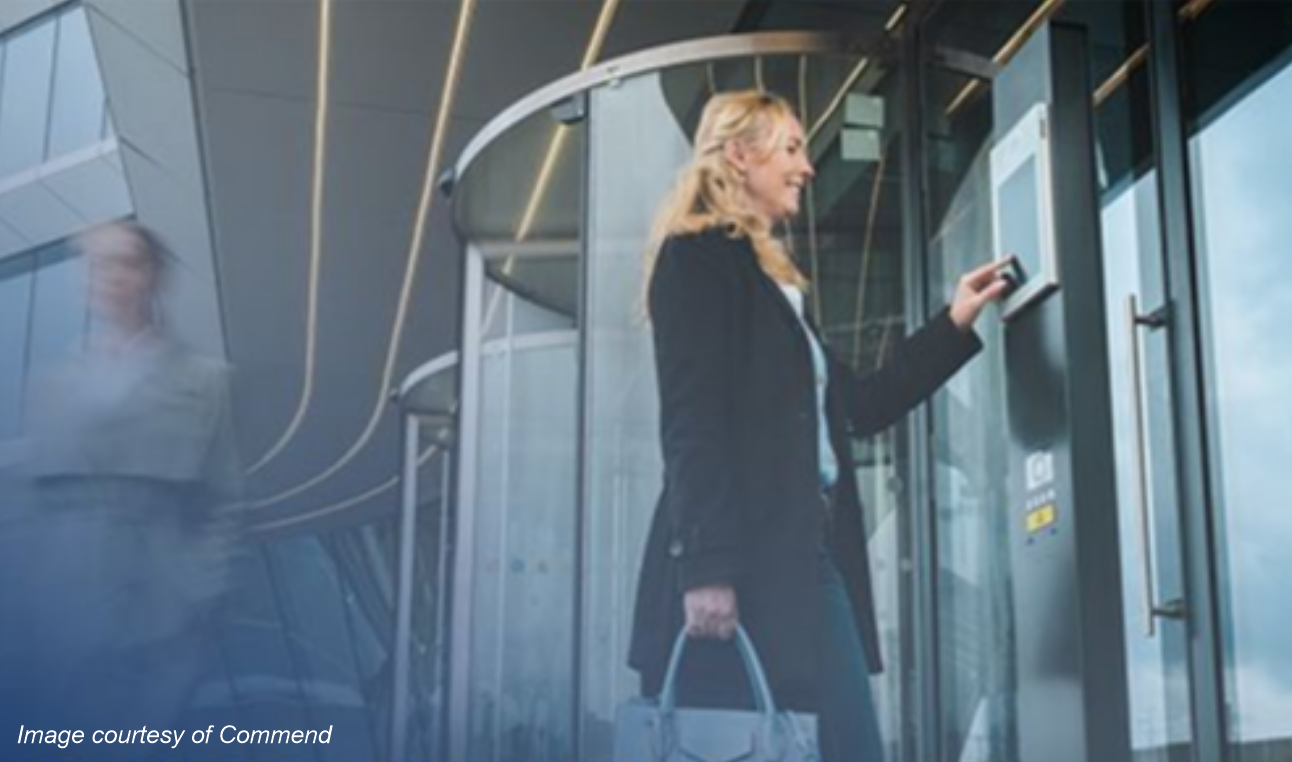3 min read
Intercom Stations and Visitor Management Software: Enhancing Healthcare Facility Security
![]() Theseus Team
:
Aug 28, 2024 2:19:35 PM
Theseus Team
:
Aug 28, 2024 2:19:35 PM

In the fast-paced and often high-stress environment of healthcare facilities, safety and security are critically important. Ensuring that employees, patients, and visitors are safe and their information is protected requires a comprehensive approach that includes robust visitor communication systems and visitor accountability. Two key components of this strategy are intercom systems and visitor management software, both of which play critical roles in enhancing the overall security posture of healthcare facilities.
The Importance of Effective Visitor Communication
Visitor communication involves the exchange of information between visitors and the security team and staff monitoring and working on the healthcare campus. This process is not just about welcoming guests; it's about maintaining a secure environment where everyone—employees, patients, and visitors—can feel safe. Effective visitor communication is crucial for several reasons:
-
Security: Ensuring that visitors are authorized to be in specific areas of the facility prevents unauthorized access, which could lead to theft, data breaches, or other security incidents. Verifying their intent and identity prior to opening a door is very important.
-
Safety: Clear communication helps direct visitors to their intended destinations, reducing the likelihood of accidents or incidents in sensitive areas.
-
Compliance: Many healthcare facilities are subject to regulations that require strict control and monitoring of visitor access. Proper visitor communication helps ensure compliance with these regulations.
-
Asset Protection: By monitoring and controlling visitor access, facilities can better protect their assets, including medical equipment and sensitive patient data.
-
Liability Reduction: A well-managed visitor communication system can help mitigate potential liabilities by ensuring that visitors are where they are supposed to be, are accounted for, and that any incidents are well-documented.
-
Efficient Operations: Streamlined staff and visitor communication reduces confusion and delays, helping to maintain the smooth operation of the facility.
-
Visitor Experience: Effective communication enhances the visitor experience by providing clear directions and assistance, which is especially important in the often stressful environment of a healthcare facility.
Intercom Stations: First Line of Defense
Intercom stations, particularly those equipped with video capabilities, are an essential part of visitor communication in healthcare facilities. These systems allow for real-time communication between visitors and security personnel, enabling security teams to verify the identity and intent of visitors before granting access to the facility or specific departments.
Key Benefits of Intercom Stations:
-
Enhanced Security: Video intercom systems provide visual verification, ensuring that only authorized individuals gain access to restricted areas. This adds an additional layer of security compared to audio-only systems.
-
Controlled Access: Intercom stations can be strategically placed at entry points and within sensitive departments, allowing security personnel to control who enters and exits these areas.
-
Improved Visitor Experience: By facilitating direct communication, intercom stations help visitors feel more welcome and supported, especially if they need assistance finding their way.
-
Emergency Management: In an emergency, intercom stations can be used to quickly communicate with visitors and guide them to safety.
Visitor Management Software: Streamlining Access and Tracking
Visitor management software is a powerful tool that provides a centralized platform for tracking and managing visitor access throughout the facility. This software can automate many aspects of visitor communication and security, from pre-registration to on-site check-in and beyond.
Key Benefits of Visitor Management Software:
-
Automated Check-In: Visitors can pre-register their visits online, speeding up the check-in process when they arrive at the facility. This reduces congestion in lobby areas and enhances the visitor experience.
-
Visitor Tracking: The software tracks the movement of visitors within the facility, ensuring they are in the correct locations. This is especially important in healthcare settings where certain areas may be off-limits to the public.
-
Color-Coded Badges: By issuing color-coded badges or stickers indicating a visitor's approved and intended location, the software makes it easy for staff to identify whether a visitor is where they should be. This visual cue adds an additional layer of security.
-
Compliance and Reporting: The software can generate detailed reports on visitor activity, helping facilities comply with regulatory requirements and providing valuable data for security audits.
In a healthcare facility, where the safety and security of employees, patients, and visitors are of utmost importance, intercom stations and visitor management software are indispensable tools. By integrating these systems into a comprehensive safety and security strategy, healthcare facilities can create a safer, more secure environment that not only protects but also enhances the overall experience for everyone on campus. The combination of real-time communication, controlled access, and efficient visitor management ensures that healthcare facilities remain safe havens for those who need them most.
Contact us to get started with improving safety and security at your facility.
CASE STUDIES ABOUT OUR CONSULTING SERVICES FOR HEALTHCARE
 DOWNLOAD OUR HEALTHCARE FACILITY AND HOSPITAL CAMPUS SECURITY AND SAFETY GUIDE
DOWNLOAD OUR HEALTHCARE FACILITY AND HOSPITAL CAMPUS SECURITY AND SAFETY GUIDE
As a security manager or administrator in a healthcare facility, understanding and addressing your distinct security needs is paramount. This guide focuses on the critical aspects you must consider to protect your patients, staff, and visitors. By examining the unique challenges faced by healthcare operators, we provide a comprehensive overview of the strategies and technologies essential for a robust physical security program. It is crucial to ensure compliance with HIPAA, Joint Commission, and IAHSS guidelines and regulations to maintain a secure and accessible environment.
Recent trends highlight a significant increase in violence within healthcare settings. According to the IAHSS Healthcare Crime Survey, simple assault rates have been rising alarmingly. The data indicates that from 2012 to 2019, assault rates were approximately 10 incidents per 100 beds. However, in the past three years, this rate has more than doubled. This statistic underscores the urgent need for enhanced security measures in healthcare facilities.




